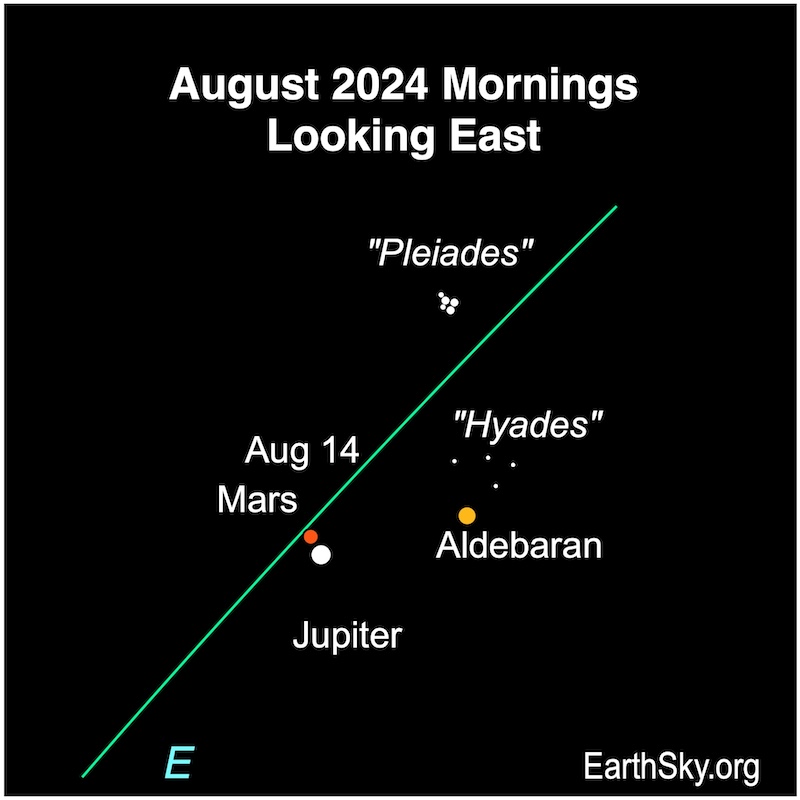
On Wednesday, August 14, 2024, you can see a lovely conjunction in the morning sky. The bright planet Jupiter and the red planet Mars will meet on the sky’s dome. They are closest at 17 UTC on August 14. That’s 12 p.m. CDT.
What’s a conjunction?
Technically speaking, objects are said to be in conjunction when they have the same right ascension – sort of like celestial longitude – on our sky’s dome. Practically speaking, objects in conjunction will likely be visible near each other for some days.
Occasionally, two or more objects meet up with each other in our sky. Astronomers use the word conjunction to describe these meetings. The word conjunction comes from Latin, meaning to join together. Maybe you remember the old Conjunction Junction cartoons from the 1970s. In language, conjunctions relate to clauses brought together with words like and. In astronomy, conjunctions relate to two or more objects brought together in the sky.
Sometimes one of these objects is the sun, so the conjunction cannot be seen. But other conjunctions – between stars, our moon, and the planets – can be truly spectacular.
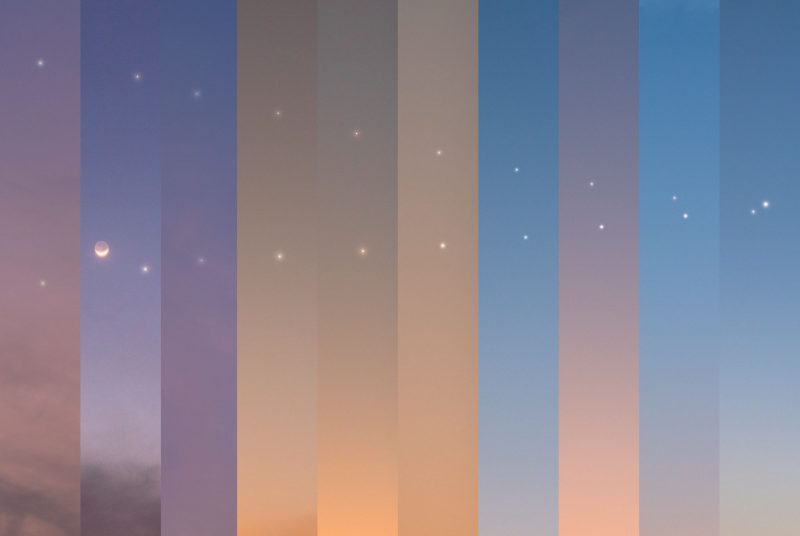
You can’t see an inferior conjunction
An inferior conjunction is when an object passes between us and the sun. Any object that orbits the sun closer than Earth does might pass through inferior conjunction from time to time. That is, it can, assuming its orbit lies more or less close to the ecliptic.
Usually, though, when astronomers speak of an inferior conjunction, they’re talking about Venus or Mercury, which orbit between Earth and the sun. Astronomers sometimes refer to Venus and Mercury as inferior planets. When they’re at or near inferior conjunction, we generally can’t see them. They’re hidden in the sun’s glare. Occasionally, though, Venus or Mercury at inferior conjunction can be seen to transit across the sun’s disk.
We shouldn’t forget the moon here. It passes between Earth and the sun at new moon once each month. Therefore it would be correct, if a little unusual, to say that the moon is at inferior conjunction when it’s at its new phase.
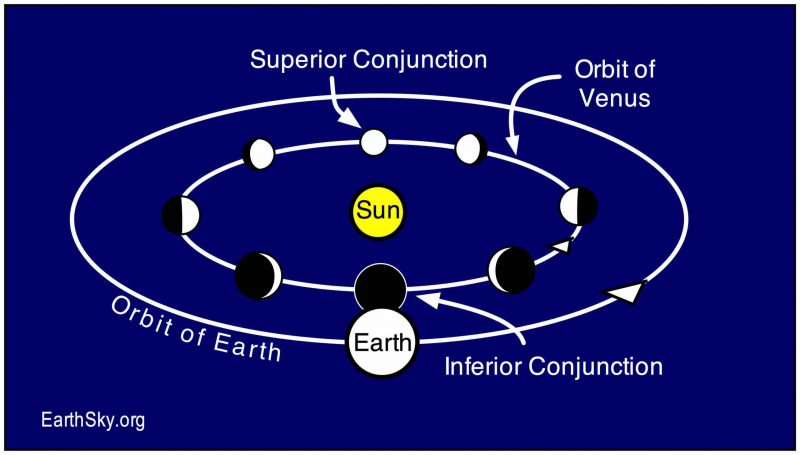
You can’t see a superior conjunction either
A superior conjunction is when an object passes behind the sun from our point of view. Look at Venus’ orbit in the diagram above. Half of its conjunctions with the sun – when they come together on our sky’s dome – are inferior conjunctions, and half are superior conjunctions. It’s fun to imagine the inferior planets on an endless cycle of passing in front of the sun, as seen from Earth, then behind it, and back again, like squirrels running around a tree.
Meanwhile, the superior planets – or planets farther from the sun than Earth – can never be at inferior conjunction. Mars, Jupiter, Saturn, Uranus and Neptune can never pass between us and the sun. So the superior planets only have superior conjunctions.
But other conjunctions can look beautiful
The most common – and most exciting – type of conjunction doesn’t involve the sun. Any time two objects pass each other on the sky’s dome, they’re said to be at conjunction. These sorts of conjunctions – maybe between two planets, or a planet and a star, or a star and the moon – happen multiple times every month. They are beautiful. The view can stop you in your tracks.
For example, if you were fortunate enough to have looked at the moon on July 21, 1969, as Neil Armstrong and Buzz Aldrin headed home from the Sea of Tranquillity, you’d have seen the moon in conjunction with Spica, the brightest star in the constellation Virgo. They were only about two degrees apart that night. That’s a bit more than the width of your index finger held out at arm’s length.
There are always a few particularly good conjunctions every year. On March 1-2, 2023, we were treated to a spectacular conjunction between bright planets Venus and Jupiter, as you can see below. Click here to see a full gallery of Venus-Jupiter conjunction photos captured by members of the EarthSky community.
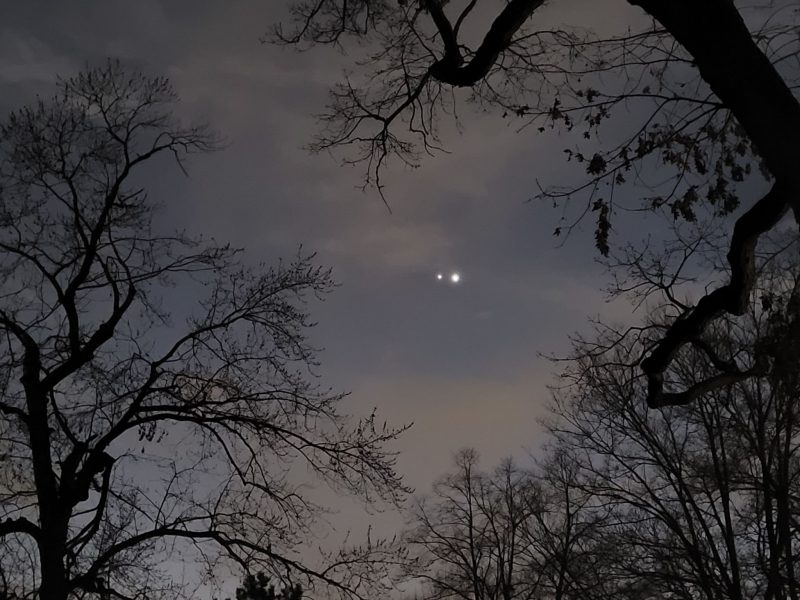
Watch for and enjoy conjunctions
People often think about the night sky as being permanent and unchanging, at least on a human scale. If you watch the skies often, though, you’ve surely noticed that’s not true. The stars don’t move relative to each other, but they do move across the sky over the course of a single night, as Earth spins under the sky. And, from one night to the next, each star rises and sets four minutes earlier each day, as Earth moves around the sun.
Once you’ve found the ecliptic, you can see where the real action is. Because they are relatively close to us, the planets and moon do move relative to each other and the stars, and quickly, from our point of view. They change their positions, appear to move closer together and farther apart, and sometimes pass by each other in the sky coming to conjunction. Of all of the pleasures of stargazing, seeing this movement of our nearest neighbors is one of the greatest.
Stay up to date with upcoming conjunctions via EarthSky’s night sky guide.
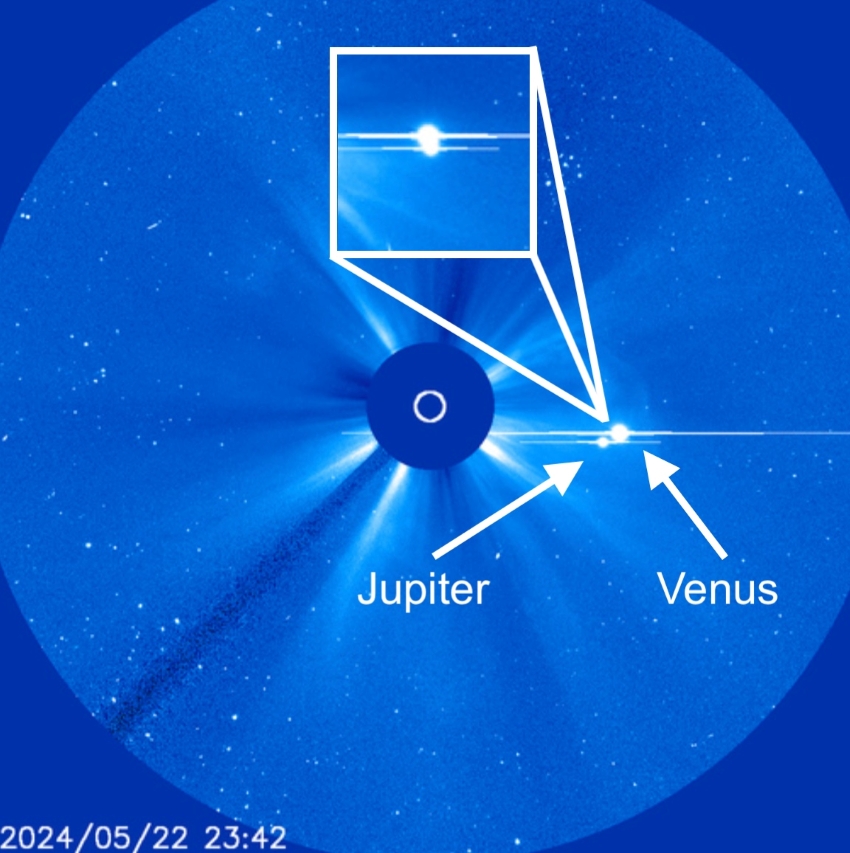
Bottom line: A conjunction is when two objects are close together on our sky’s dome. Some conjunctions can’t be seen, but others look spectacular. Don’t miss the conjunction between Jupiter and Mars around August 14, 2024.











